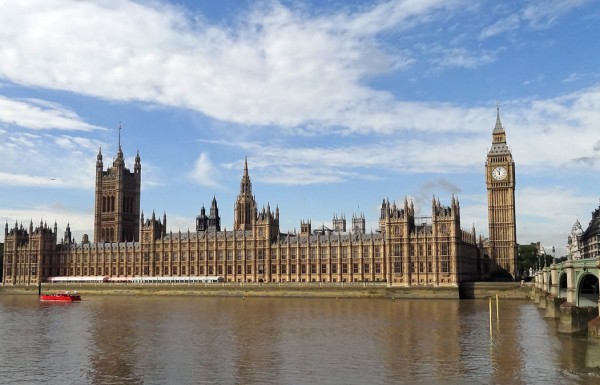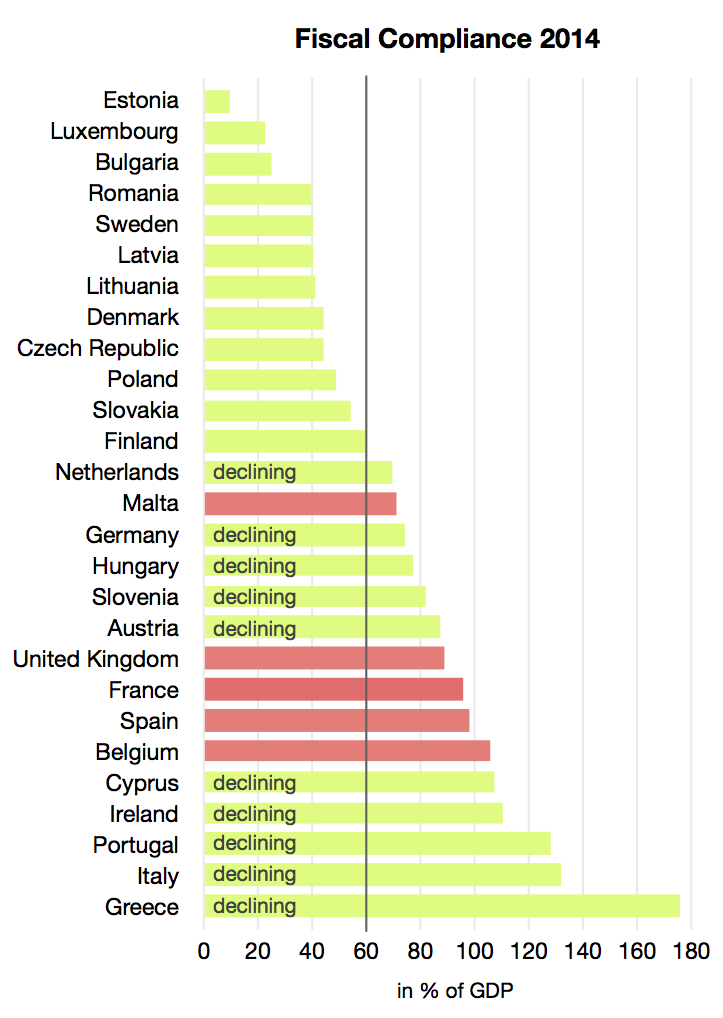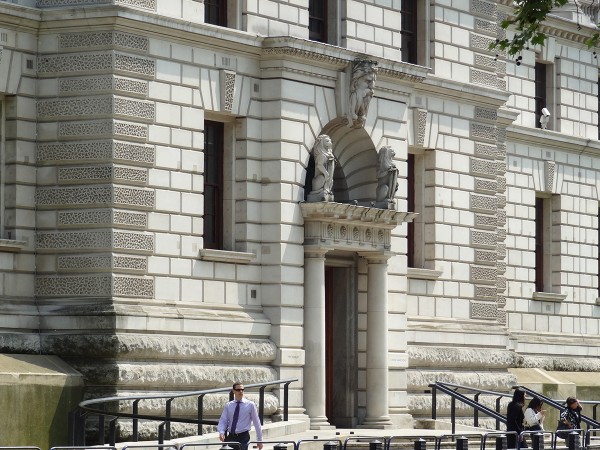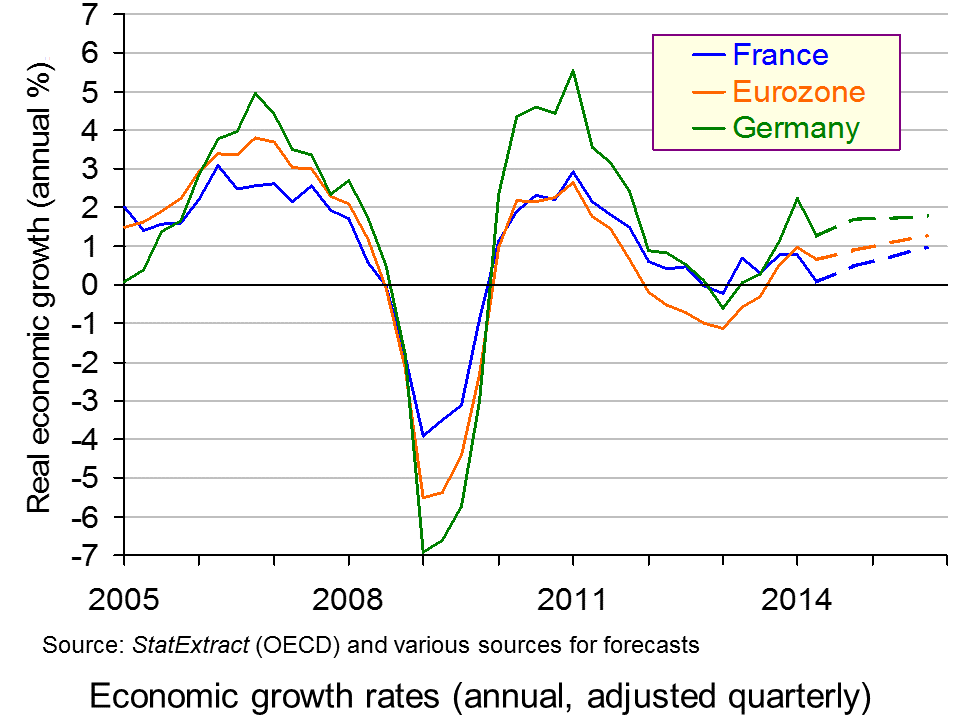 Mario Draghi, the ECB President, has indicated that the ECB is prepared to engage in further monetary stimulus. This is because of continuing weaknesses in the global economy and in particular in emerging markets.
Mario Draghi, the ECB President, has indicated that the ECB is prepared to engage in further monetary stimulus. This is because of continuing weaknesses in the global economy and in particular in emerging markets.
Although the ECB at its meeting in Malta on 22 October decided to keep both interest rates and asset purchases (€60 billion per month) at current levels, Mario Draghi stated at the press conference that, at its next meeting on December 3rd, the ECB would be prepared to cut interest rates and re-examine the size, composition and duration of its quantitative easing programme. He stopped short, however, of saying that interest rates would definitely be cut or quantitative easing definitely increased. He said the following:
“The Governing Council has been closely monitoring incoming information since our meeting in early September. While euro area domestic demand remains resilient, concerns over growth prospects in emerging markets and possible repercussions for the economy from developments in financial and commodity markets continue to signal downside risks to the outlook for growth and inflation. Most notably, the strength and persistence of the factors that are currently  slowing the return of inflation to levels below, but close to, 2% in the medium term require thorough analysis.
slowing the return of inflation to levels below, but close to, 2% in the medium term require thorough analysis.
In this context, the degree of monetary policy accommodation will need to be re-examined at our December monetary policy meeting, when the new Eurosystem staff macroeconomic projections will be available. The Governing Council is willing and able to act by using all the instruments available within its mandate if warranted in order to maintain an appropriate degree of monetary accommodation.”
Mario Draghi also argued that monetary policy should be supported by fiscal policy and structural policies (mirroring Japan’s three arrows). Structural policies should include actions to improve the business environment, including the provision of an adequate public infrastructure. This is vital to “increase productive investment, boost job creation and raise productivity”.
As far as fiscal policies are concerned, these “should support the economic recovery, while remaining in compliance with the EU’s fiscal rules”. In other words, fiscal policy should be expansionary, while staying within the limits set by the Stability and Growth Pact.
His words had immediate effects in markets. Eurozone government bond yields dropped to record lows and the euro depreciated 3% against the US dollar over the following 24 hours.
Webcasts
 ECB Press Conference on YouTube, Mario Draghi (22/10/15)
ECB Press Conference on YouTube, Mario Draghi (22/10/15)
 Draghi reloads bazooka FT Markets, Ferdinando Guigliano (22/10/15)
Draghi reloads bazooka FT Markets, Ferdinando Guigliano (22/10/15)
Articles
Mario Draghi: ECB prepared to cut interest rates and expand QE The Guardian, Heather Stewart (22/10/15)
Draghi signals ECB ready to extend QE Financial Times, Claire Jones and Elaine Moore (22/10/15)
Dovish Mario Draghi sends bond yields to new lows Financial Times, Katie Martin (23/10/15)
 What Draghi Said on QE, Policy Outlook, Global Risks and Inflation Bloomberg, Deborah Hyde (22/10/15)
What Draghi Said on QE, Policy Outlook, Global Risks and Inflation Bloomberg, Deborah Hyde (22/10/15)
ECB set to ‘re-examine’ stimulus policy at next meeting BBC News (22/10/15)
The global economy warrants a big dose of caution The Guardian, Larry Elliott (25/10/15)
ECB Press Conference
Introductory statement to the press conference (with Q&A) ECB, Mario Draghi (President of the ECB), Vítor Constâncio (Vice-President of the ECB) (22/10/15)
Questions
- Why is the ECB considering further expansionary monetary policy?
- What monetary measures can a central bank use to stimulate aggregate demand?
- Explain the effects of Mario Draghi’s announcement on bond and foreign exchange markets.
- What are the objectives of ECB monetary policy according to the its mandate?
- Should the ECB consider using quantitative easing to provide direct funding for infrastructure projects?
- What constraints does the EU’s Stability and Growth Pact impose on eurozone countries?
- What are the arguments for and against (a) the Bank of England and (b) the US Federal Reserve engaging in further QE?
- If the ECB does engage in an expanded QE programme, what will determine its effectiveness?
 In his annual Mansion House speech to business leaders on 10 June 2015, George Osborne announced a new fiscal framework. This would require governments in ‘normal times’ to run a budget surplus. Details of the new framework would be spelt out in the extraordinary Budget, due on 8 July.
In his annual Mansion House speech to business leaders on 10 June 2015, George Osborne announced a new fiscal framework. This would require governments in ‘normal times’ to run a budget surplus. Details of the new framework would be spelt out in the extraordinary Budget, due on 8 July.
If by ‘normal times’ is meant years when the economy is growing, then this new fiscal rule would mean that in most years governments would be require to run a surplus. This would reduce general government debt.
And it would eventually reduce the debt from the forecast ratio of 89% of GDP for 2015 to the target of no more than 60% set for member states under the EU’s Stability and Growth Pact. Currently, many countries are in breach of this target, although the Pact permits countries to have a ratio above 60% provided it is falling towards 60% at an acceptable rate. The chart shows in pink those countries that were in breach in 2014. They include the UK.
 Sweden and Canada have similar rules to that proposed by George Osborne, and he sees them as having been more able to use expansionary fiscal policy in emergency times, such as in the aftermath of the financial crisis of 2007/8, without running excessive deficits.
Sweden and Canada have similar rules to that proposed by George Osborne, and he sees them as having been more able to use expansionary fiscal policy in emergency times, such as in the aftermath of the financial crisis of 2007/8, without running excessive deficits.
Critics have argued, however, that running a surplus whenever there is economic growth would dampen recovery if growth is sluggish. This makes the rule very different from merely requiring that, over the course of the business cycle, there is a budget balance. Under that rule, years of deficit are counterbalanced by years of surplus, making fiscal policy neutral over the cycle. With a requirement for a surplus in most years, however, fiscal policy would have a net dampening effect over the cycle. The chancellor hopes that this would be countered by increased demand in the private sector and from exports.
The rule is even more different from the Coalition government’s previous ‘fiscal mandate‘, which was for a ‘a forward-looking target to achieve cyclically-adjusted current balance by the end of the rolling, five-year forecast period’. The current budget excludes investment expenditure on items such as transport infrastructure, hospitals and schools. The fiscal mandate was very similar to the former Labour government’s ‘Golden rule’, which was to achieve a current budget balance over the course of the cycle.
 By excluding public-sector investment from the target, as was previously done, it can allow borrowing to continue for such investment, even when there is a substantial deficit. This, in turn, can help to increase aggregate supply by improving infrastructure and has less of a dampening effect on aggregate demand. A worry about the new rule is that it could lead to further erosion of public-sector investment, which can be seen as vital to long-term growth and development of the economy. Indeed, Sweden decided in March this year to abandon its surplus rule to allow government borrowing to fund investment.
By excluding public-sector investment from the target, as was previously done, it can allow borrowing to continue for such investment, even when there is a substantial deficit. This, in turn, can help to increase aggregate supply by improving infrastructure and has less of a dampening effect on aggregate demand. A worry about the new rule is that it could lead to further erosion of public-sector investment, which can be seen as vital to long-term growth and development of the economy. Indeed, Sweden decided in March this year to abandon its surplus rule to allow government borrowing to fund investment.
The podcasts and articles below consider the implications of the new rule for both aggregate demand and aggregate supply and whether adherence to the rule will help to increase or decrease economic growth over the longer term.
Video and audio podcasts
 George Osborne confirms budget surplus law Channel 4 News, Gary Gibbon (10/6/15)
George Osborne confirms budget surplus law Channel 4 News, Gary Gibbon (10/6/15)
 Osborne To Push Through Budget Surplus Rules Sky News (10/6/15)
Osborne To Push Through Budget Surplus Rules Sky News (10/6/15)
 OECD On Osborne’s Fiscal Plans Sky News, Catherine Mann (10/6/15)
OECD On Osborne’s Fiscal Plans Sky News, Catherine Mann (10/6/15)
 ‘Outright fiscal madness’ Osborne’s Mansion House Speech RT UK on YouTube, Harry Fear (11/6/15)
‘Outright fiscal madness’ Osborne’s Mansion House Speech RT UK on YouTube, Harry Fear (11/6/15)
 A “straightjacket” [sic] on future government spending? BBC Today Programme, Robert Peston; Nigel Lawson (11/6/15)
A “straightjacket” [sic] on future government spending? BBC Today Programme, Robert Peston; Nigel Lawson (11/6/15)
 Thursday’s business with Simon Jack BBC Today Programme, Gerard Lyons (12/6/15)
Thursday’s business with Simon Jack BBC Today Programme, Gerard Lyons (12/6/15)
Articles
Osborne seeks to bind successors to budget surplus goal Reuters, David Milliken (10/6/15)
George Osborne to push ahead with budget surplus law The Telegraph, Peter Dominiczak (10/6/15)
Osborne Wants U.K. to Build Treasure Chest During Good Times Bloomberg, Svenja O’Donnell (10/6/15)
Questions over Osborne’s Victorian-era budget plans BBC News (10/6/15)
Years more spending cuts to come, says OBR BBC News (11/6/15)
Is Chancellor right to want surplus in normal times? BBC News, Robert Peston (10/6/15)
George Osborne Unveils New Budget Surplus Law, But Critics Warn It Means Needless Cuts Huffington Post, Paul Waugh (10/6/15)
George Osborne’s fiscal handcuffs are political, but he does have a point Independent, Hamish McRae (11/6/15)
Osborne’s budget surplus law follows UK tradition of moving goalposts Financial Times, Chris Giles (10/6/15)
George Osborne’s budget surplus rule is nonsense and it could haunt Britain for decades Business Insider, Malaysia, Mike Bird (10/6/15)
To cut a way out of recession we need growth, not austerity economics Herald Scotland, Iain Macwhirter (11/6/15)
George Osborne moves to peg public finances to Victorian values The Guardian, Larry Elliott and Frances Perraudin (10/6/15)
The Guardian view on George Osborne’s fiscal surplus law: the Micawber delusion The Guardian, Editorial (10/6/15)
Academics attack George Osborne budget surplus proposal The Guardian, Phillip Inman (12/6/15)
Osborne plan has no basis in economics Guardian letters, multiple signatories (12/6/15)
Is there an optimal debt-to-GDP ratio? Vox EU, Anis Chowdhury and Iyanatul Islam
No basis in economics Mainly Macro, Simon Wren-Lewis (16/6/15)
Questions
- Explain what is meant by a ‘cyclically adjusted current budget balance’.
- How does the speed with which the government reduces the public-sector debt affect aggregate demand and aggregate supply?
- What are the arguments for and against running a budget surplus: (a) when there is currently a large budget deficit; (b) when there is already a budget surplus? How do the arguments depend on the stage of the business cycle?
- Do you agree with the statement that ‘the biggest issue with the UK economy right now is not the government deficit’. If so, what bigger issues are there?
- How could public-sector debt as a proportion of GDP decline without the government running a budget surplus?
- How might the term ‘normal times’ be defined? How does the definition used by the Chancellor affect the rate at which the public-sector debt is reduced?
- How sustainable is the current level of public-sector debt? How does its sustainability relate to the interest rate on long-term government bonds?
- If there is a budget surplus, such that G – T is negative, what can we say about the balance betwen (I + X) and (S + M)? What good and adverse consequences could follow?
- Why do George Osborne’s plans for budget surpluses ‘risk a liquidity crisis that could also trigger banking problems, a fall in GDP, a crash, or all three’?
 The French economy is flatlining. It has just recorded the second quarter of zero economic growth, with growth averaging just 0.02% over the past 12 months. What is more, the budget deficit is rising, not falling. In April this year, the French finance minister said that the deficit would fall from 4.3% in 2013 to 3.8% in 2014 and to the eurozone ceiling of 3% in 2015. He is now predicting that it will rise this year to 4.4% and not reach the 3% target until 2017.
The French economy is flatlining. It has just recorded the second quarter of zero economic growth, with growth averaging just 0.02% over the past 12 months. What is more, the budget deficit is rising, not falling. In April this year, the French finance minister said that the deficit would fall from 4.3% in 2013 to 3.8% in 2014 and to the eurozone ceiling of 3% in 2015. He is now predicting that it will rise this year to 4.4% and not reach the 3% target until 2017.
The deficit is rising because a flatlining economy is not generating sufficient tax revenues. What is more, expenditure on unemployment benefits and other social protection is rising as unemployment has risen, now standing at a record 10.3%.

And it is not just the current economic situation that is poor; the outlook is poor too. The confidence of French companies is low and falling, and investment plans are muted. President Hollande has pledged to cut payroll taxes to help firms, but so far this has not encouraged firms to invest more.
So what can the French government do? And what can the EU as a whole do to help revive not just the French economy but most of the rest of the eurozone, which is also suffering from zero, or near zero, growth?
There are two quite different sets of remedies being proposed.

The first comes from the German government and increasingly from the French government too. This is to stick to the austerity plans: to get the deficit down; to reduce the size of government in order to prevent crowding out; and to institute market-orientated supply-side policies that are business friendly, such as reducing business regulation. Business leaders in France, who generally back this approach, have called for reducing the number of public holidays and scrapping the maximum 35-hour working week. They are also seeking reduced business taxes, financed by reducing various benefits.
Increasingly President Hollande is moving towards a more business-friendly set of policies. Under his government’s ‘Responsibility Pact’, a €40 billion package of tax breaks for business will be financed through €50 billion of cuts in public spending. To carry through these policies he has appointed an ex-investment banker, Emmanuel Macron, as economy minister. He replaces Arnaud Montebourg, who roundly criticised government austerity policy and called for policies to boost aggregate demand.

This brings us to the alternative set of remedies. These focus on stimulating aggregate demand through greater infrastructure investment and cutting taxes more generally (not just for business). The central argument is that growth must come first and that this will then generate the tax revenues and reductions in unemployment that will then allow the deficit to be brought down. Only when economic growth is firmly established should measures be taken to cut government expenditure in an attempt to reduce the structural deficit.
There are also compromise policies being proposed from the centre. These include measures to stimulate aggregate demand, mainly through tax cuts, accompanied by supply-side policies, whether market orientated or interventionist.

As Europe continues to struggle to achieve recovery, so the debate is getting harsher. Monetary policy alone may not be sufficient to bring recovery. Although the ECB has taken a number of measures to stimulate demand, so far they have been to little avail. As long as business confidence remains low, making increased liquidity available to banks at interest rates close to zero will not make banks more willing to lend to business, or businesses more willing to borrow. Calls for an end, or at least a temporary halt, to austerity are thus getting louder. At the same time, calls for sticking to austerity and tackling excessive government spending are also getting louder.
Articles
Hollande entrusts French economy to ex-banker Macron Reuters, Ingrid Melander and Jean-Baptiste Vey (26/8/14)
France’s new Minister of the Economy Emmanuel Macron described by left-wingers as a ‘copy-and-paste Tony Blair’ Independent, John Lichfield (28/8/14)
Merkel praises France’s economic reform plans after Berlin talks with PM Valls Deutsche Welle (22/9/14)
French economy flat-lines as business activity falters Reuters, Leigh Thomas (23/9/14)
French public finances: Rétropédalage The Economist (13/9/14)
French employer group urges ‘shock therapy’ for economy Reuters (24/9/14)
Last chance to save France: loosen 35-hour week and cut public holidays, say bosses The Telegraph (24/9/14)
‘Sick’ France’s economy is stricken by unemployment ‘fever’ The Telegraph (17/9/14)
France’s economics ills worsen but all remedies appear unpalatable The Observer, Larry Elliott and Anne Penketh (31/8/14)
The Fall of France The New York Times, Paul Krugman (28/8/14)
Why Europe is terrified of deflation Salon, Paul Ames (20/9/14)
Europe’s Greater Depression is worse than the 1930s The Washington Post, Matt O’Brien (14/8/14)
Worse than the 1930s: Europe’s recession is really a depression The Washington Post, Matt O’Brien (20/8/14)
Eurozone business growth slows in September, PMI survey finds BBC News (23/9/14)
Europe must ‘boost demand’ to revive economy, US warns BBC News (21/9/14)
Valls says France would never ask Germany to solve its problems Reuters, Annika Breidthardt and Michelle Martin (23/9/14)
The euro-zone economy: Asset-backed indolence The Economist (11/9/14)
Data
Annual macro-economic database (AMECO) Economic and Financial Affairs DG, European Commission
Business and Consumer Surveys Times Series Economic and Financial Affairs DG, European Commission
StatExtracts OECD
Statistics database European Central Bank
Questions
- What types of supply-side reforms would be consistent with the German government’s vision of solving Europe’s low growth problem?
- How could a Keynesian policy of reflation be consistent with getting France’s deficit down to the 3% of GDP limit as specified in the Stability and Growth Pact (see)?
- What is meant by (a) financial crowding out and (b) resource crowding out? Would reflationary fiscal policy in France lead to either form of crowding out? How would it be affected by the monetary stance of the ECB?
- Give examples of market-orientated and interventionist supply-side policies.
- What is meant by the terms ‘cyclical budget deficit’ and ‘structural budget deficit’. Could demand-side policy affect the structural deficit?
- Using the European Commission’s Business and Consumer Surveys find our what has happened to business and consumer confidence in France over the past few months.
- How important is business and consumer confidence in determining economic growth in (a) the short term and (b) the long term?
The meeting of EU leaders on night of Thursday/Friday 8/9 December was the latest in a succession of such meetings designed to solve the eurozone’s problems (see also, Part A, Part B and Part C in this series of posts from earlier this year).
Headlines in the British press have all been about David Cameron’s veto to a change in the Treaty of Lisbon, which sets the rules of the operation of the EU and its institutions. Given this veto, the 17 members of the eurozone and the remaining 9 non-eurozone members have agreed to proceed instead with inter-governmental agreements about tightening the rules governing the operation of the eurozone.
In this news item we are not looking at the politics of the UK’s veto or the implications for the relationship between the UK and the rest of the EU. Instead, we focus on what was agreed and whether it will provide the solution to the eurozone’s woes: to fiscal harmonisation; to stimulating economic growth; to bailing out severely indebted countries, such as Italy; and to recapitalising banks so as to protect them from sovereign debt problems and the private debt problems that are likely to rise as the eurozone heads for recession.
The rules on fiscal harmonisation represent a return to something very similar to the Stability and Growth Pact, but with automatic and tougher penalties built in for any country breaking the rules. What is more, eurozone member countries will have to submit their national budgets to the European Commission for approval.
The agreement has generally been well received – stock markets rose in eurozone countries on the Friday by around 2%. But the consensus of commentators is that whilst the agreement might prove a necessary condition for rescuing the euro, it will not be a sufficient condition. Expect a Part E (and more) to this series!
Meanwhile the following articles provide a selection of reactions from around the world to the latest agreement.
Articles
EU leaders announce new fiscal agreement Southeast European Times, Svetla Dimitrova (9/12/11)
 Eurozone crisis: What if the euro collapses? BBC News (9/12/11)
Eurozone crisis: What if the euro collapses? BBC News (9/12/11)
New European Treaty Won’t Solve Current Liquidity Crisis Huffington Post, Bonnie Kavoussi (9/12/11)
UK alone as EU agrees fiscal deal BBC News (9/12/11)
A good deal for the UK – or the euro? BBC News, Stephanie Flanders (9/12/11)
European leaders strengthen firewall Financial Times, Joshua Chaffin and Alan Beattie (9/12/11)
EU leaders push for tough rules in new treaty DW-World, Bernd Riegert (9/12/11)
German Vision Prevails as Leaders Agree on Fiscal Pact The New York Times, Steven Erlanger and Stephen Castle (9/12/11)
European Union leaders agree to forge new fiscal pact; Britain the only holdout The Washington Post, Anthony Faiola (9/12/11)
The new rules by EU leaders Irish Independent (10/12/11)
More uncertainty seen in wake of EU summit Deseret News (9/12/11)
EU president unveils raft of crisis-fighting measures The News (Pakistan) (10/12/11)
No rave reviews The Economist, Buttonwood (9/12/11)
Beware the Merkozy recipe The Economist (10/12/11)
Europe blunders into a blind, and dangerous, alley Guardian, Larry Elliott, (9/12/11)
As the dust settles, a cold new Europe with Germany in charge will emerge Guardian, Ian Traynor, (9/12/11)
Euro zone agreement only partial solution – IMF Reuters, Tova Cohen and Ari Rabinovitch (11/12/11)
Celebration Succumbs to Concern for Euro Zone New York Times, Liz Alderman (12/12/11)
In graphics: The eurozone’s crisis BBC News
Questions
- How do the latest proposals for fiscal harmonisation differ from the Stability and Growth Pact?
- How might a Keynesian criticise the agreement?
- What is the role of (a) the IMF and (b) the ECB in the agreement?
- Do you agree that the agreement is a necessary but not sufficient condition for solving the eurozone’s problems?
With a mounting crisis in the eurozone, heads of government met in an emergency meeting in Brussels on 21 July.
The task was a massive one: how to tackle Greece’s growing debt crisis and stave off default; how to protect other highly indebted countries which have already had to seek emergency bailouts, namely Ireland and Portugal, from falling market confidence and thus rising interest rates, thereby making their debts harder to service; how to prevent speculative pressures extending like a contagion to other highly indebted countries, such as Spain and Italy; how to prevent speculation against the euro and even to prevent its break-up; how to reduce the size of budget deficits at a time of low growth without jeopardising that growth. A problem is that Greece has already adopted the required austerity measures for it to receive a second bailout from the EU agreed at the end of June, and yet its debt burden is likely to rise as growth remains negative.
Eurozone leaders recognised that the stakes were high. Failure could see contagion spread, interest rates soar and perhaps one or more countries leaving the euro. No agreement was not an option. As it turned out, the agreement was more comprehensive than most commentators had expected. Markets reacted positively. Stock markets in Europe and around the world rose and the euro strengthened.
So what was the agreement? Has it solved the Greek and eurozone crises? Will it prevent contagion? Or has it merely put the problem on hold for the time being? Will more fundamental measures have to be put in place, such as much fuller fiscal union, if the eurozone is to function as an effective single currency area? The following is a selection of the hundreds of articles worldwide that have reported on the summit and the agreement.
Articles
 Greece thrown lifeline by eurozone leaders BBC News, Chris Morris (22/7/11)
Greece thrown lifeline by eurozone leaders BBC News, Chris Morris (22/7/11)
A Marshall plan with ‘haircuts’: The draft agreement Guardian, Chris Morris (21/7/11)
Banks forced to share pain of bailout for Greece Independent, Sean O’Grady and Vanessa Mock (22/7/11)
EU leaders agree €109bn Greek bail-out Financial Times, Peter Spiegel, Quentin Peel, Patrick Jenkins and Richard Milne (21/7/11)
Greece to default as eurozone agrees €159bn bailout The Telegraph, Louise Armitstead and Bruno Waterfield (21/7/11)
Europe steps up to the plate The Telegraph, Ambrose Evans-Pritchard (21/7/11)
Greek bailout boosts global markets Guardian, Julia Kollewe, Ian Traynor and Lisa O’Carroll (22/7/11)
Greek bailout deal: What the experts say Guardian (22/7/11)
Bailed out – again. Eurozone throws Greece €109bn lifeline Guardian, Ian Traynor (22/7/11)
New package for Greece must match last year’s if it is to stave off default Sydney Morning Herald, Malcolm Maiden (22/7/11)
Russian or Belgian roulette? The Economist, Charlemagne’s notebook (21/7/11)
 Saving the euro: A bit of breathing space The Economist, Charlemagne’s notebook (22/7/11)
Saving the euro: A bit of breathing space The Economist, Charlemagne’s notebook (22/7/11)
 Europe’s ‘safe haven’: corporate bonds Financial Times, Demetrio Salorio (21/7/11)
Europe’s ‘safe haven’: corporate bonds Financial Times, Demetrio Salorio (21/7/11)
 Summit that saved the euro? Financial Times, John Authers and Vincent Boland (21/7/11)
Summit that saved the euro? Financial Times, John Authers and Vincent Boland (21/7/11)
Greece aid package boosts stock markets BBC News (22/7/11)
Q&A: Greek debt crisis BBC News (22/7/11)
Timeline: The unfolding eurozone crisis BBC News (22/7/11)
Eurozone summit: It may be a solution, but doubts remain Guardian, Larry Elliott (21/7/11)
German taxpayers are being asked to socialise Europe’s debts The Telegraph, Jeremy Warner (22/7/11)
The eurozone is not a nation state Financial Times blogs, Gavyn Davies (20/7/11)
One step back from the abyss BBC News blogs, Stephanie Flanders (22/7/11)
For long-term gain, the EU will have to share the pain Independent, Sean O’Grady (22/7/11)
 Greek debt deal ‘not the last word’ BBC Today Progrgamme, Stephanie Flanders and Sir John Gieve (22/7/11)
Greek debt deal ‘not the last word’ BBC Today Progrgamme, Stephanie Flanders and Sir John Gieve (22/7/11)
Questions
- Outline the measures agreed at the eurozone heads of government summit on 21 July.
- Explain what is meant by a ‘haircut’ in the context of debts. What types of haircut were agreed at the summit?
- How big a reduction in Greece’s debt stock will result from the deal? Why may it not be enough?
- Explain how the European Financial Stability Facility (ESFS) works? How will this change as a result of the agreement?
- What vulnerabilities remain in the eurozone?
- What are the arguments for closer fiscal union in the eurozone? Is more required than merely a return to the Stability and Growth Pact?
 Mario Draghi, the ECB President, has indicated that the ECB is prepared to engage in further monetary stimulus. This is because of continuing weaknesses in the global economy and in particular in emerging markets.
Mario Draghi, the ECB President, has indicated that the ECB is prepared to engage in further monetary stimulus. This is because of continuing weaknesses in the global economy and in particular in emerging markets.slowing the return of inflation to levels below, but close to, 2% in the medium term require thorough analysis.
 ECB Press Conference on YouTube, Mario Draghi (22/10/15)
ECB Press Conference on YouTube, Mario Draghi (22/10/15) Draghi reloads bazooka FT Markets, Ferdinando Guigliano (22/10/15)
Draghi reloads bazooka FT Markets, Ferdinando Guigliano (22/10/15) What Draghi Said on QE, Policy Outlook, Global Risks and Inflation Bloomberg, Deborah Hyde (22/10/15)
What Draghi Said on QE, Policy Outlook, Global Risks and Inflation Bloomberg, Deborah Hyde (22/10/15)






